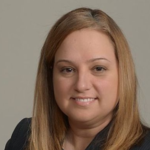By Maria Sampalis, OD
Feb. 10, 2021

Like many of you, I am always looking for new ways to serve patients and grow revenues. With the pandemic cutting into our profitability last year, and continuing to pose challenges, finding new care and profitability opportunities has never been more important. Here are the low-cost ways I am enhancing care and practice growth.
Myopia Management: Safeguarding Vision for Life & Creating Long-Term Patients
I got certified last year by CooperVision to fit MiSight 1 day contact lenses. These are daily wear, single-use contact lenses that have been clinically proven and FDA-approved to slow the progression of myopia (nearsightedness) when initially prescribed for children 8-12 years old, according to CooperVision.
Certification was complimentary with my time the only expense. I was required to complete five online training sessions, read articles on myopia management and take a certification test in which I had to achieve a score of at least 80 percent.
Myopia management is an important service to provide families with children, as myopia has been shown to increase the risk to patients of developing a range of sight-threatening conditions. High myopia is associated with an increased risk of developing myopic macular degeneration, retinoschisis, posterior staphyloma, glaucoma retinal detachment and cataracts, according to the National Institutes of Health.
Along with the tremendous benefits to patients, myopia management offers great practice-building and revenue-generation potential. It gives you a pathway to bring more families of patients into your practice with children who may stick with you for a lifetime after starting with you as children receiving myopia management care. Patients fitted with MiSight 1 day lenses must visit with their eyecare provider every six months for monitoring. This helps you cement a strong doctor-patient relationship with, not just the child, but the parent(s) who brings the child to the appointments.
What’s more, myopia management contact lenses like MiSight 1 day cannot be purchased online, giving you another powerful way to compete with online retailers.
The cost to me for a one-year supply of MiSight 1 day inventory is $750. For my practice, based on how I fee the patient, that means a $2,000 profit for each one-year supply of MiSight 1 day lenses sold, and that does not factor in the revenue generated from the patient’s visits to my office. All told, I am projecting that myopia management will bring at least $8,000-$10,000 annually into my practice.
Building Dry-Eye Care: Addressing a Growing Need & Finding New Revenue Streams
I have not yet invested in high-ticket dry eye diagnosis and treatment technology like LipiView and LipiFlow. However, I am taking steps to increase dry eye-related care by selling dry eye care packages containing Bruder masks, hydrochloric acid to clean lids and tea tree oil. I purchase each of these packages for $25, and sell them for $50 each. I have been selling 30-40 a month. If I keep selling these dry-eye kits at this same rate, it could add up to $24,000 annually.
Other Articles to Explore
Our aging population and dry eye-related to side effects from prescription medications has made providing dry eye care important for a long time. However, with patients spending more time than ever using computers and other digital devices during the pandemic, there is an increase in younger patients complaining of eye discomfort due to dry eye.
In addition to the care kits I have been selling, I have started treating dry eye through the use amniotic membranes from VisiDisc. I paid $210 for two kits of amniotic membranes, and was reimbursed $1,500 by the patient’s insurance for this treatment, which changed the life of a 90-year-old woman who could not get out of bed because of debilitating dry eye. This is a potential growth area of dry-eye care that could eventually generate $5,000-$10,000 annually.
To educate patients of the difference dry eye care can make to their eye health, I purchased an artificial intelligence software app, Advanced Ophthalmic Systems (AOS), that measures and shows patients the improvement to their eyes as dry eye alleviation steps, like use of the dry eye care packages and amniotic membrane treatment, are taken. I downloaded the technology to my phone, and then, through use of an adapter cord, connected my phone to my slit lamp. This AI technology costs around $250 a month and the adapter cord cost $100. I am now able to show patients evidence that their dry eye treatment is making a positive impact, which encourages continued compliance with the treatment plan and reinforces the value of our services.
If my number of dry eye patients continues to grow steadily, I will be looking into the possible purchase of the Systane iLux hand-held dry eye treatment device from Alcon or the TearLab Osmolarity System.
 Maria Sampalis, OD, is the owner of Sampalis Eye Care in Warwick R.I. and sublease at Warby Parker. She is also the founder of Corporate Optometry on Facebook. Dr. Sampalis is also founder of the new job site corporateoptometrycareers.com and www.corporateoptometry.com. She is available for practice management consulting. To contact: msampalis@hotmail.com
Maria Sampalis, OD, is the owner of Sampalis Eye Care in Warwick R.I. and sublease at Warby Parker. She is also the founder of Corporate Optometry on Facebook. Dr. Sampalis is also founder of the new job site corporateoptometrycareers.com and www.corporateoptometry.com. She is available for practice management consulting. To contact: msampalis@hotmail.com

























